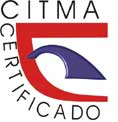Influence of mill rotation speed on indicators of autogenous grinding of kimberlitic ores of Catoca, Angola
Keywords:
energy-technological indicators, autogenous grinding, pulp density, turning speed, energy efficiency, kimberlitic ores.Abstract
The diamonds production has a great impact on the economy of the Republic of Angola, in which Catoca plant is of particular relevance. The autogenous grinding plays an important role in the technology of processing kimberlitic ores, as it has the purpose of achieving the release at the coarsest possible sizes. In order to evaluate the influence of the rotation speed and the pulp density on the energy efficiency indicators of the mill, a series of tests was designed considering three speed levels (55, 65 and 80 % of the critical speed) and two levels of dilution (dilute pulps, 45-50 % solids, and dense pulps 55-60 % solid). A sampling system was organized in the industrial facility that allowed evaluating the size distribution of the particles in the mill discharge and the power consumed by its motor and its capacity were recorded. At the same time, the specific energy consumed by the mill was evaluated. The results show that both operational factors have a decisive influence on the indicators studied. The higher the density of the pulp and the rotational speed of the mill, the larger the size of the mill outlet. The speed of rotation strongly influences the energy consumption of the installation.Downloads
References
Alatalo, J. 2011: Charge Dynamics in Tumbling Mills: Simulation and Measurements with an In-Mill Sensor. PhD Thesis. Luleå University of Technology, Sweden.
Baron, N. 1977: Mineralogía: Su objeto y procedimientos de investigación. Nedra.
Coello-Velázquez, A. L. 1993: Sovershenstvovanie tecnologii izmilchenii lateritobij pud na zabode Punta Gorda. PhD Thesis. IMS, Saint Petersburg.
Coello-Velázquez, A. L. y Tikjonov, O. N. 1996: Regularidad en la molienda de los minerales lateríticos. Minería y Geología, XIII(3): 57-60.
Coello-Velázquez, A. L.; Menéndez-Aguado, J. M. y Laborde, B. R. 2008: Grindability of lateritic nickel ores in Cuba. Powder Technology, 182: 113–115.
Delboni, H. y Morrell, S. 1996: The modeling of autogenous and semiautogenous mills. In: Mular, A. L.; Barratt, D. J. y Knight, D. A. (Eds.). International Autogenous and Semiautogenous Grinding Technology. University of British Columbia, Vancouver, p. 713–728.
Deniz, V.; Gelir, A. y Demir, A. 2003: The Effect of Fraction of Mill Critical Speed on Kinetic Breakage Parameters of Clinker and Limestone in a Laboratory Ball Mill. S"1 International Mining Congress and Exhibition of Turkey-IMCET 2003. ISBN 975-395-605-3.
Fahlström, P. H. 1962: Autogenous grinding at Vassbo. World Mining, 15(10): 28-32.
Fuerstenau, D. W. y Sullivan, D. A. 1962: Comminution of mixture in ball mill. AIME Trane., 223: 152.
Holmes, T. A. y Patching, S. 1957: Preliminary investigation of the differential grinding of quartz-limestone mixture. Trans. Inst. Chem.
Kapur, O. C. y Fuerstenau, D. W. 1988: Energy split in multicomponent grinding. International Journal of Mineral Processing, 24(1-2): 125-142.
King, P. 2012: Modeling and simulation of mineral processing system. Boston-Oxford-Johanesburg: Butterworth Heinemann. ISBN: 9780080511849.
Martins-Pole, F. 2016: Influencia de la composición substancial de las kimberlitas de Catoca en los indicadores energo-tecnológico de la molienda semi-autógena (SAG). Tesis doctoral. Tutores: Juan María Menéndez-Aguado y Alfredo L. Coello Velázquez. Universidad de Oviedo. Mieres.
Melgarejo, J. E.; Watangua, M.; Francisco, L. I.; Galí, S.; Proenza, J.; Staniewska, K. y Gonsalves, A. O. 2006: Ilmenita de la kimberlita diamantífera de Catoca, Angola. Macla: revista de la Sociedad Española de Mineralogía, (6): 309-312.
Menéndez-Aguado, J. M.; Coello, A. L.; Tikjonov, O. N. y Rodríguez, M. 2006: Implementation of sustainable concepts during comminution process in Punta Gorda nickel ore plant. Powder Technology, 170: 153–157.
Pourghahramani, P. 2012: Effects of ore characteristics on product shape properties and breakage mechanisms in industrial SAG mills. Minerals Engineering, 32: 30–37.
Prokopenko, A. N. y Larionov, B. A. 2007: Optimizirobat process mocrogo pudnogo samoilmihchenia v mielnitse D 7.3x3.2 m EGL. Otchetpo nauchnoissledobatielskoi paboti. Catoka.
Schonert, K. 1979: Energetic aspect of size reduction of brittle material. Zem.-Kalk-Gips, 3: 40–44.
Tanaka, T. 1966: Selektivnii pazmol dvujcomponentnij smecei, sostvnie chastikototij obladaiut pazlichnoi pazmolaemosti. V kn. Trudi Ebropieskogo Soveshania po izmilchenia, Stroizdat, Moskva.
Tano, K. 2005: Continuous Monitoring of Mineral Processes with Special Focus on Tumbling Mills – A Multivariate Approach. PhD. Thesis. Luleå University of Technology, Sweden.
Wills, B. A. y Finch, J. A. 2016: Wills’ Mineral Processing Technology: An Introduction to the Practical Aspects of Ore Treatment and Mineral Recovery. Eighth Edition. Elsevier. 498 p.
Wills, B. y Napier-Munn, T. J. 2006: Mineral Processing Technology: An Introduction to the Practical Aspects of Ore Treatment and Mineral Recovery. Seventh Edition. London: Elsevier Ltd. 450 p.
Published
How to Cite
Issue
Section
Copyright (c) 2020 Alfredo Coello Velazquez

This work is licensed under a Creative Commons Attribution-NonCommercial 4.0 International License.
- Authors retain copyright and guaranteeing the right magazine to be the first publication of the work as licensed under a Creative Commons Attribution-NonCommercial that allows others to share the work with an acknowledgment of the work's authorship and initial publication in this journal.
- Authors may establish separate supplemental agreements for the exclusive distribution version of the work published in the journal (eg, place it in an institutional repository or publish it in a book), with an acknowledgment of its initial publication in this journal.
- Authors are allowed and recommended to disseminate their work through the Internet (e.g., in institutional telematic archives or on their websites) before and during the submission process, which can produce interesting exchanges and increase citations of the published work. (See The effect of open access)










